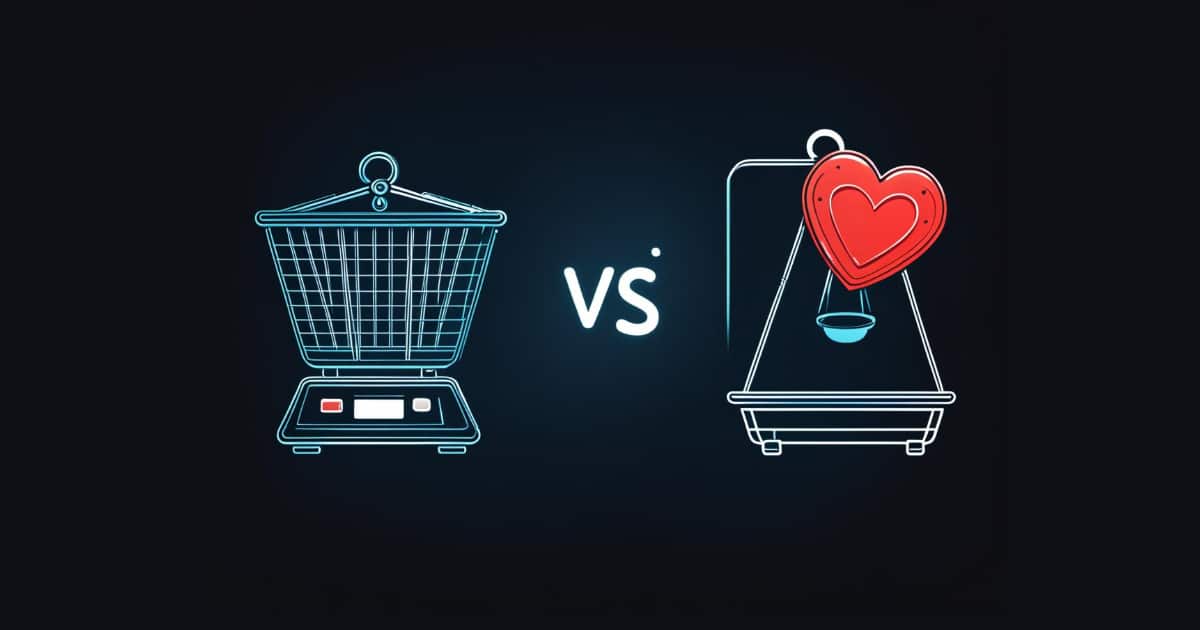The Business Beginner:
When starting an online business, people often grapple with choosing the right niche or product. But, how crucial is this decision in forming the foundation of a new online business venture?
Many aspiring entrepreneurs struggle to find a balance between their passions and market demand. They worry about entering oversaturated markets or, conversely, targeting niches that are too narrow. Some are driven by the desire to solve a problem they’ve personally experienced, while others are motivated by spotting gaps in existing markets.
The fear of making the wrong choice and investing time and resources into a non-viable product or service can be paralyzing for many.
So, to alleviate any concerns you may have, let’s dive into some of the key challenges you might be facing as you start your online business and explore ways to navigate them effectively.
Choosing the Right Niche or Product:
Striking a Balance Between Passion and Market Demand:
Self-Assessment: Start by identifying your passions and skills. What problems can you solve with your expertise?
Market Research: Use tools like Google Trends, keyword research, and competitor analysis to gauge demand. Look for underserved gaps in the market that align with your interests.
Avoiding Oversaturated Markets
Unique Selling Proposition (USP):
Define what makes your product unique. How can you differentiate yourself from existing competitors?
Micro-Niching:
Consider targeting a more specific segment within a broader market. This can help reduce competition and build a loyal customer base.
Concerns About Niche Viability
- Validation: Test your idea with a minimal viable product (MVP) or through pre-orders to validate demand before fully committing.
- Feedback: Engage with potential customers early to get feedback and refine your product based on their needs.
Setting Up an E-Commerce Website
Platform Selection
- Established Platforms vs. Custom Solutions: Platforms like Shopify and WooCommerce offer ease of use and integrations but may limit customization. A custom solution offers flexibility but requires more technical expertise and higher costs.
- Cost Considerations: Factor in not just the initial setup costs but also ongoing maintenance, transaction fees, and potential scalability needs.
Creating a User-Friendly Interface
- User Experience (UX) Design: Focus on intuitive navigation, fast loading times, and mobile responsiveness.
- Professional Appearance: Invest in high-quality visuals, consistent branding, and clear, compelling copy.
Technical Challenges
- Payment Gateways: Choose reliable payment processors like PayPal, Stripe, Wise or others that cater to your target audience.
- Inventory Management: Use inventory management software that integrates seamlessly with your e-commerce platform.
- Security: Ensure your website has SSL certificates and complies with data protection regulations to build trust with customers.
Marketing on a Limited Budget
Prioritizing Marketing Channels
- Social Media: Leverage platforms where your target audience spends their time. Use organic posts, engagement, and targeted ads strategically.
- Content Marketing: Create valuable content that addresses your audience’s pain points. This can drive organic traffic and establish your authority.
- Email Campaigns: Build an email list from day one. Email marketing offers high ROI and helps nurture customer relationships.
- Paid Advertising: Use pay-per-click (PPC) advertising wisely. Start with small budgets and optimize based on performance metrics.
Organic Growth Strategies
- SEO: Optimize your website for search engines to attract organic traffic. Focus on long-tail keywords and quality content.
- Social Media Engagement: Build a community around your brand by consistently engaging with your audience and providing valuable content.
- Time Investment: Automate repetitive tasks with tools like Hootsuite or Buffer to free up time for strategic activities.
Broader Aspirations and Concerns
Financial Independence and Flexibility
- Low Barriers to Entry: Take advantage of affordable online tools and platforms to minimize startup costs.
- Scalability: Plan for growth by choosing scalable solutions and staying adaptable to market changes.
Managing Work-Life Balance
- Time Management: Use productivity tools and set clear boundaries between work and personal life.
- Delegation: As your business grows, consider outsourcing tasks or hiring freelancers to manage workload.
Competing with Established Brands
- Niche Focus: Rather than competing head-to-head, carve out a unique niche where you can excel.
- Innovation: Stay updated with industry trends and continuously seek ways to innovate and improve your offerings.
Technological Change
- Continuous Learning: Invest in ongoing education and stay informed about new tools and technologies.
- Agility: Be prepared to pivot and adapt your strategies as needed to stay competitive.
Business Beginner Recap
Starting an Online Business
Setting up an e-commerce website is another common concern. With numerous platforms and options available, newcomers often feel overwhelmed. They question whether to use established platforms like Shopify or WooCommerce, or to build a custom solution. Cost considerations play a significant role, as does the need for technical skills. Many worry about creating a user-friendly interface that can compete with established online retailers. There’s also the challenge of integrating payment gateways, managing inventory, and ensuring website security. The desire to create a professional-looking site that instills trust in potential customers is a driving factor for many.
Marketing an online business effectively on a limited budget is a challenge that many new entrepreneurs face. They often struggle to cut through the noise in the crowded digital landscape without substantial financial resources. Questions arise about which marketing channels to prioritize – social media, content marketing, email campaigns, or paid advertising. Many are drawn to the idea of organic growth through content creation and social media engagement but worry about the time investment required. The pressure to quickly generate traffic and convert visitors into customers can be intense, especially when operating on a shoestring budget.
The Daunting Stages of Starting an Online Business
Beyond these specific questions, many individuals starting an online business are driven by broader aspirations and concerns. The desire for financial independence and the ability to work from anywhere are common motivators. Many are attracted to the low barriers to entry and the potential for scalability that online businesses offer. However, this is often tempered by fears of failure, concerns about work-life balance, and uncertainties about managing all aspects of a business alone. The prospect of competing with established brands and the rapid pace of technological change can also be daunting.
Despite these challenges, the allure of building something from scratch and the potential for success keep many motivated. Aspiring online entrepreneurs often envision creating a brand that resonates with customers, making a positive impact, and achieving personal fulfillment through their work. They’re excited by the possibility of tapping into global markets and the flexibility that comes with running an online business. While the road may be challenging, many are inspired by success stories of those who have turned small online ventures into thriving businesses, fueling their determination to overcome obstacles and realize their entrepreneurial dreams.
Actionable Steps Checklist for Starting an Online Business
Follow this checklist to progressively build and scale your online business from the ground up, starting with foundational steps suitable for beginners and advancing to more sophisticated strategies and tools as you grow.
Beginner Level
1. Identify Your Passion and Skills:
- Self-Assessment: Determine what problems you can solve with your expertise.
2. Conduct Basic Market Research:
- Use tools like Google Trends and keyword research to gauge demand.
- Identify gaps in the market that align with your interests.
3. Choose a User-Friendly E-Commerce Platform:
- Start with established platforms like Shopify or WooCommerce for ease of use and integrations.
4. Create Basic Marketing Materials:
- Develop high-quality visuals and consistent branding.
- Write clear, compelling copy for your website.
5. Set Up Payment Gateways:
- Choose reliable payment processors like PayPal or Stripe.
Intermediate Level
6. Define Your Unique Selling Proposition (USP):
- Differentiate your product from existing competitors.
7. Test Your Idea with a Minimal Viable Product (MVP):
• Validate demand through pre-orders or small-scale launches.
8. Build an Email List:
- Start email campaigns to nurture customer relationships.
9. Optimize Your Website for SEO:
Focus on long-tail keywords and quality content to attract organic traffic.
10. Utilize Social Media for Organic Growth:
- Engage with your audience consistently and provide valuable content.
Advance Level
11. Implement Advanced Market Research:
- Conduct competitor analysis and in-depth keyword research.
12. Consider Custom E-Commerce Solutions:
- Explore building a custom solution for greater flexibility and scalability.
13. Invest in User Experience (UX) Design:
- Focus on intuitive navigation, fast loading times, and mobile responsiveness.
14. Integrate Advanced Inventory Management Systems:
- Use software that seamlessly integrates with your e-commerce platform.
15. Launch Targeted Paid Advertising Campaigns:
- Use pay-per-click (PPC) advertising and optimize based on performance metrics.
16. Automate Marketing and Operational Tasks:
- Use tools like Hootsuite or Buffer for social media automation.
– Implement advanced inventory and customer management systems.
17. Stay Updated with Industry Trends and Technological Changes:
Continuously learn and adapt your strategies to remain competitive.

A Happy Customer:
“ Our story started with Freshdesk, a customer experience (CX) offering, followed by Freshservice for IT service management (ITSM). We then expanded our CRM offerings to include sales and marketing automation with customer service. Later we built a human resources management system (HRMS) to bring the same easy, delightful experience to employees…”

